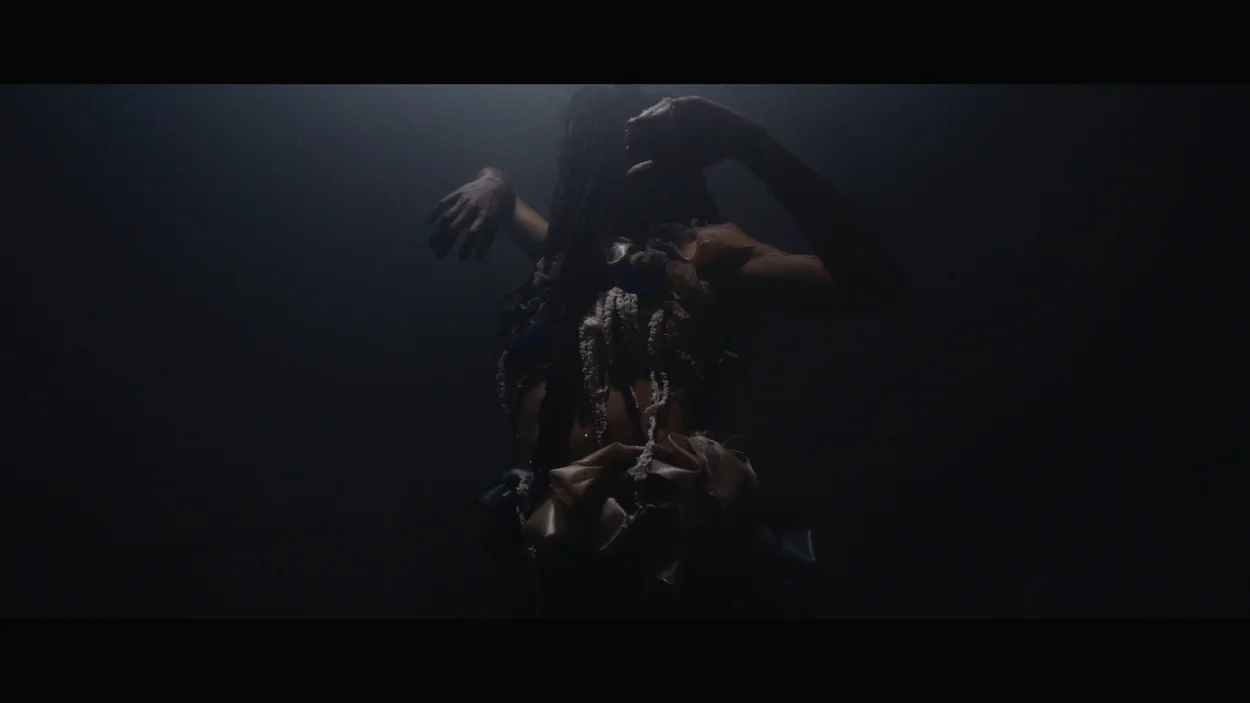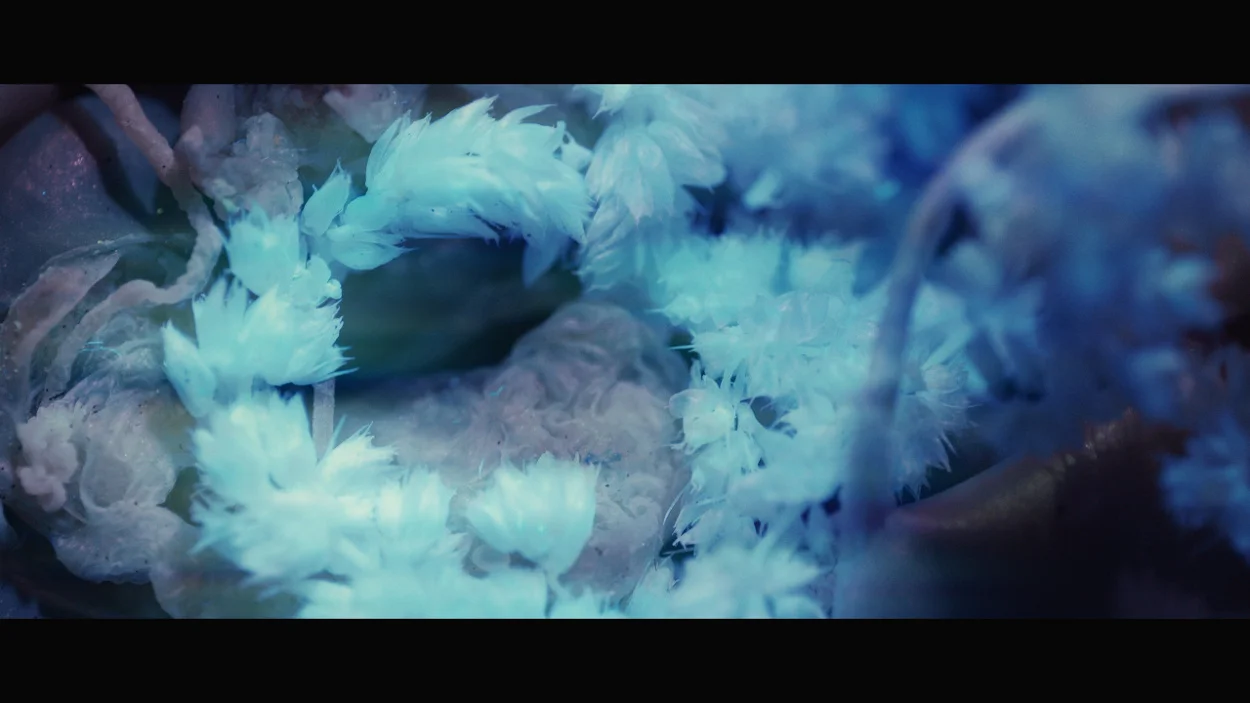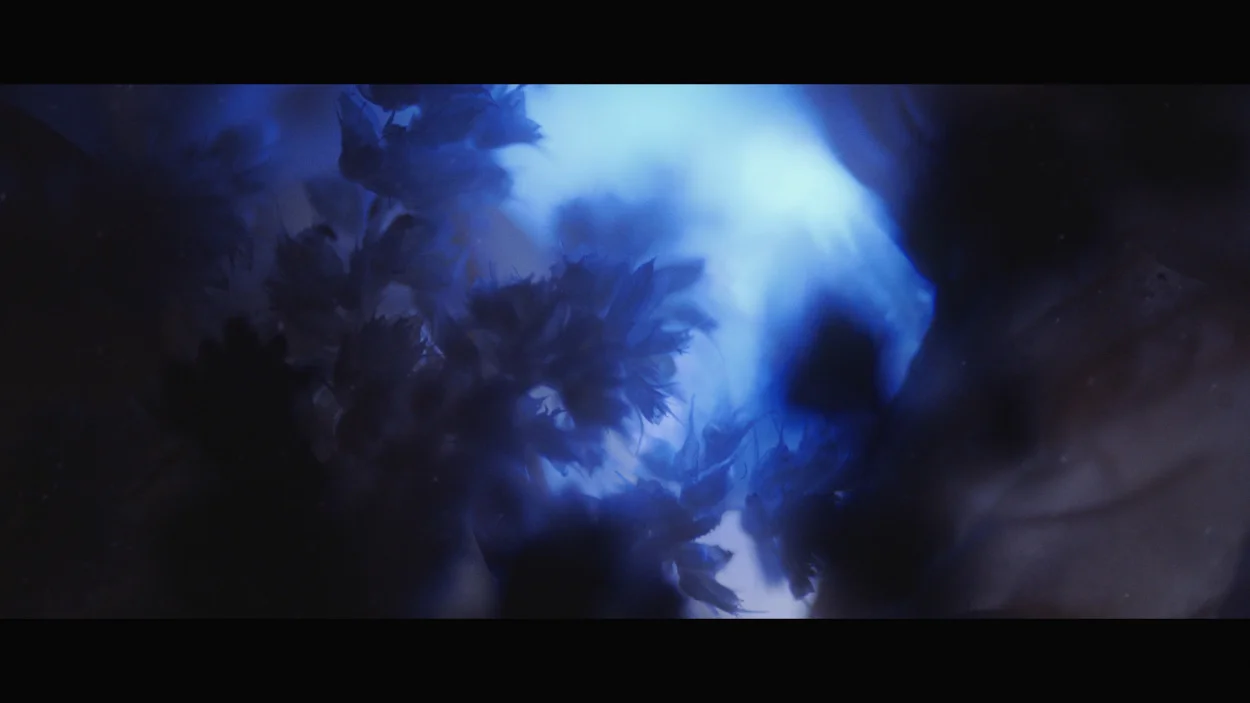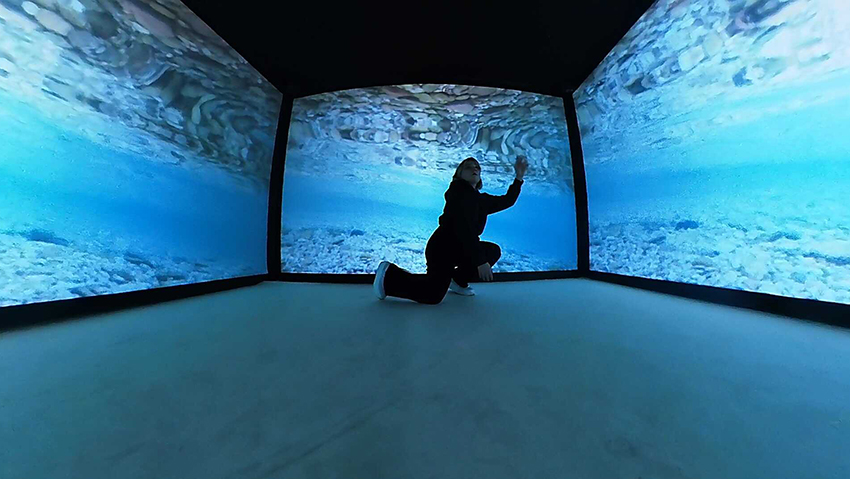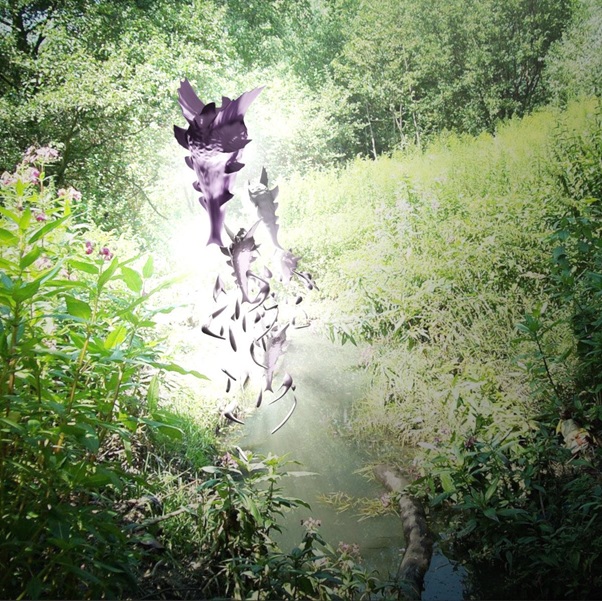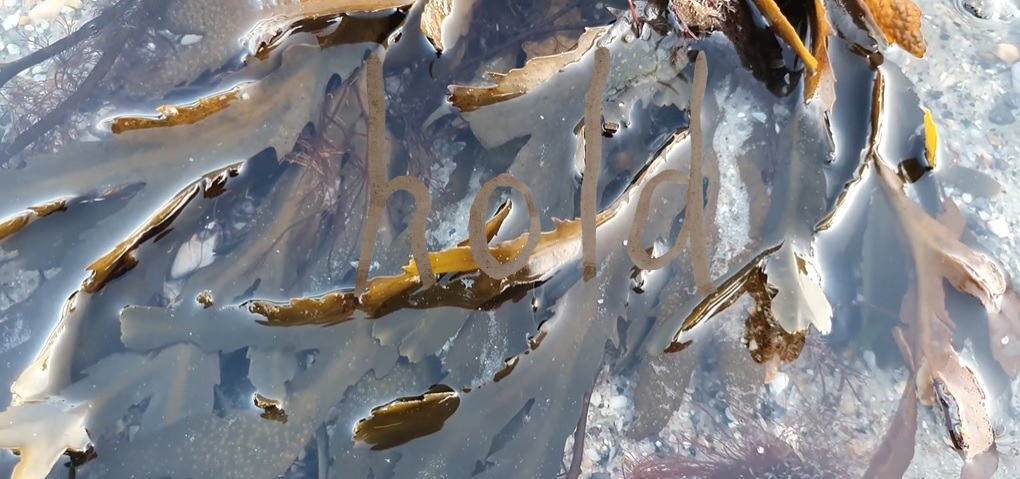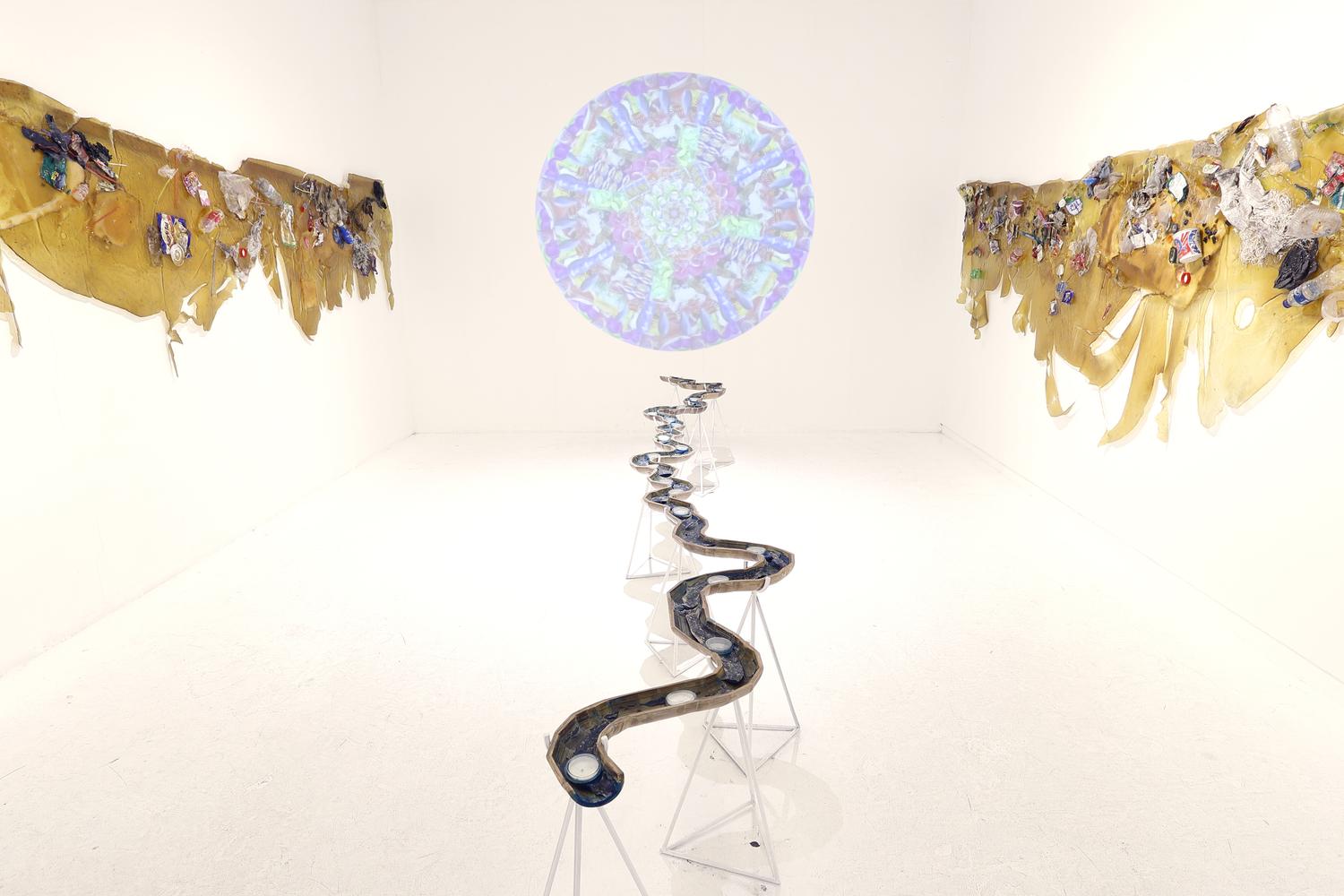The life-giving, political, and economic components of our „animated waters“ (Vernadsky 1933, Margulis 1990) exemplify a pressing melancholy of our position as a human species. Spatially and temporally: as holobionts, as fluid beings, in our own bodies, in urban habitats, in the ecosystem, and in the Anthropocene.
This work draws from a stay at the river Schwärze and the bodily encounters occurring during this stay, which reflect the fluidity of water. Along the lifeline and contact zone between the forests of Brandenburg and the city of Berlin, the film immerses in wet ontologies (Gaard 2001, Steinberg & Peters 2015, Neimanis 2016) of multiple phenomena.
Capturing the essence and pains through analog photoprocesses, hydrotests, creative writing, and filmmaking.
Inspired by Nils Bubandt et al.’s “Rubberboot Methods for the Anthropocene,” I immerse myself in the watery bodies and let my sensory apparatuses guide me. During this process, I allow ideas to naturally surface and take form. On the journey unexpectedly I am confronted with my physical vulnerability and my bodily fluids out of sync. This revelation broadens my perspective, leading me to consider the interconnected urbanized and inner human waters within the greater web of entanglements.
Ideas for this work materialize through analog photographic techniques, including photograms and chemigrams, taken at the water’s edge as well as using scientific methods for hydro-probing and testing blending art and science in my exploration.
Excerpt by Astrida Neimanis and diary by me.
